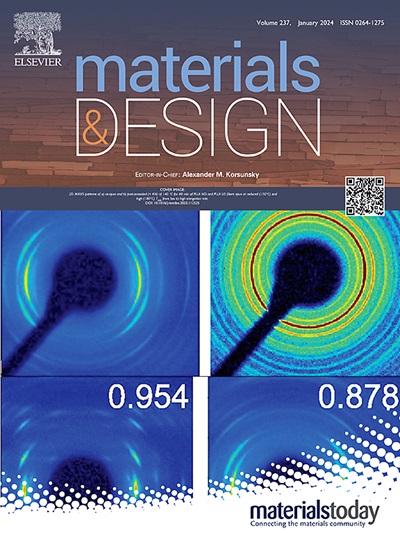Single human umbilical cord blood stem cells in decellularized porcine dermis-derived extracellular matrix hydrogel promote healing of skin wounds
IF 7.6
2区 材料科学
Q1 MATERIALS SCIENCE, MULTIDISCIPLINARY
引用次数: 0
Abstract
This study aimed to investigate the effectiveness of a porcine decellularized dermis-derived extracellular matrix (dECM) hydrogel combined with single UC-MSCs and spheroids in promoting skin wound healing. Compared to native tissue, decellularized porcine dermis (DP) exhibited a remarkable decline of approximately 90 % in DNA content relative to the native tissue, as confirmed by the lack of nuclear staining observed through 4′,6-diamidino-2-phenylindole (DAPI) staining. Furthermore, histological analysis confirmed the presence of retained ECM components in the DP, and ECM components were quantified. Optimal concentrations of the dECM hydrogel (2, 4, and 6 mg/mL) for UC-MSCs cultivation were determined, and it was observed that a concentration of 2 mg/mL promoted better proliferation of UC-MSCs. The microstructure and mechanical strength of different dECM hydrogel concentrations were analyzed using scanning electron microscope (SEM) and rheometer. Both single UC-MSCs and spheroids in a 2 mg/mL ECM hydrogel were transplanted into mouse skin wound model to assess their effectiveness in promoting skin regeneration. It was confirmed that collagen and angiogenesis involved in skin regeneration were significantly (p < 0.05) increased in the ECM hydrogel with single UC-MSCs group, compared to spheroids MSCs. Therefore, these findings propose a promising therapeutic strategy for skin wound regeneration and recovery.

求助全文
约1分钟内获得全文
求助全文
来源期刊

Materials & Design
Engineering-Mechanical Engineering
CiteScore
14.30
自引率
7.10%
发文量
1028
审稿时长
85 days
期刊介绍:
Materials and Design is a multi-disciplinary journal that publishes original research reports, review articles, and express communications. The journal focuses on studying the structure and properties of inorganic and organic materials, advancements in synthesis, processing, characterization, and testing, the design of materials and engineering systems, and their applications in technology. It aims to bring together various aspects of materials science, engineering, physics, and chemistry.
The journal explores themes ranging from materials to design and aims to reveal the connections between natural and artificial materials, as well as experiment and modeling. Manuscripts submitted to Materials and Design should contain elements of discovery and surprise, as they often contribute new insights into the architecture and function of matter.
 求助内容:
求助内容: 应助结果提醒方式:
应助结果提醒方式:


